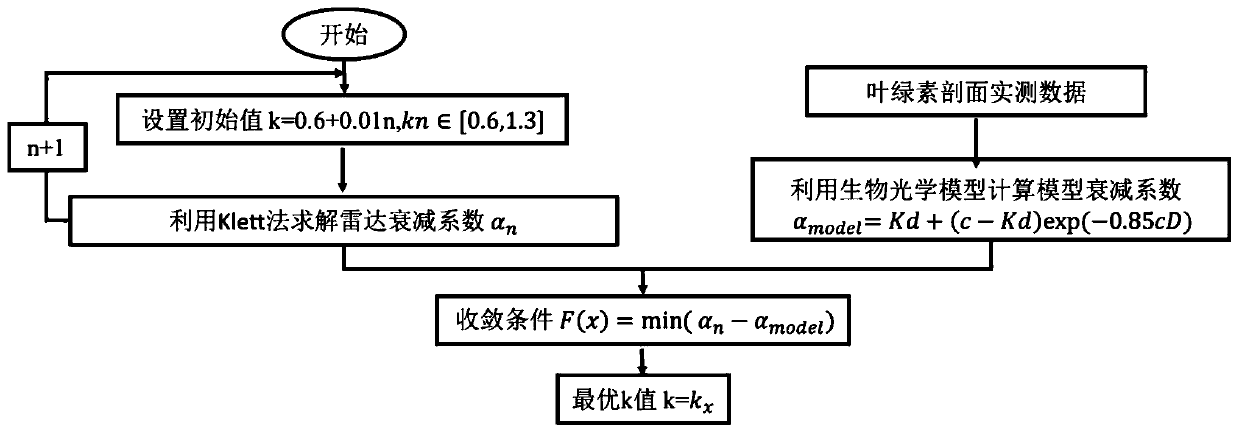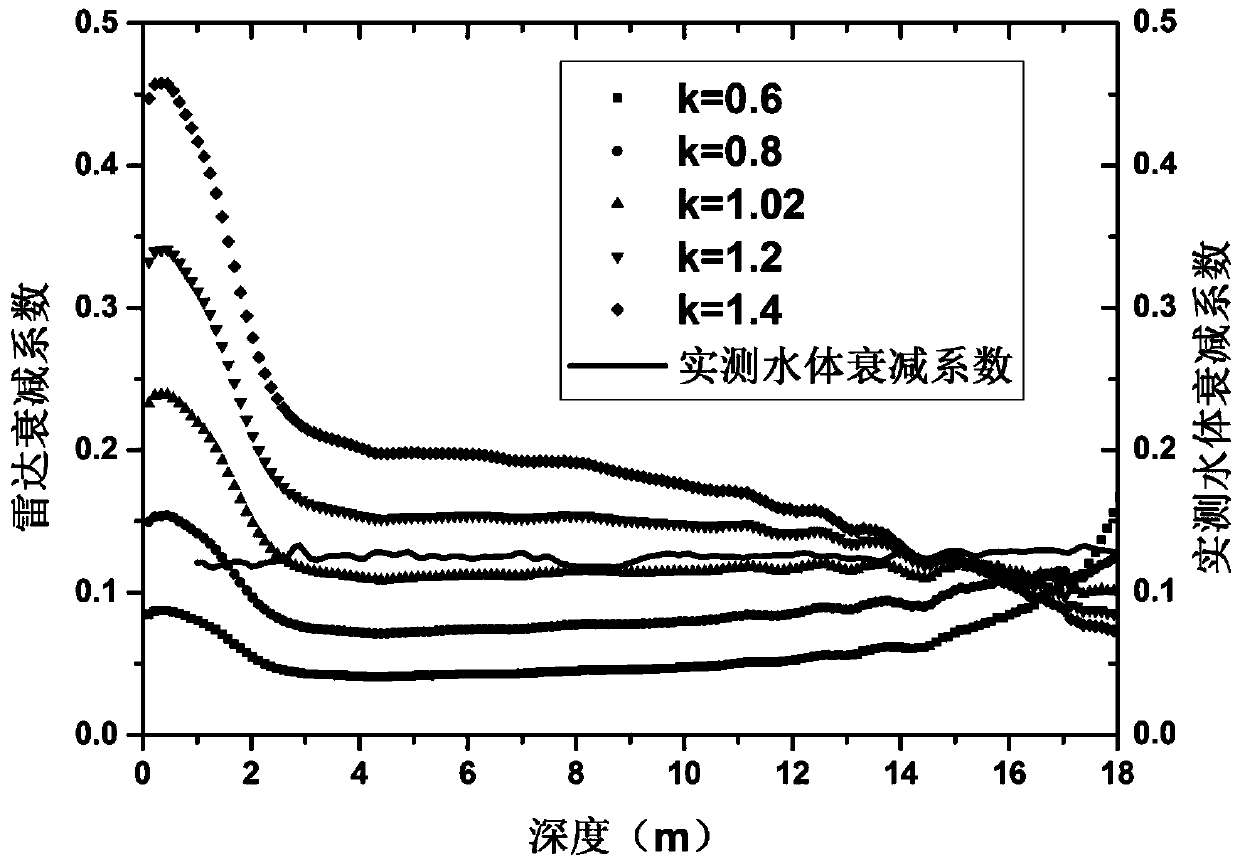Airborne marine laser radar signal processing method based on iterative Klett
A laser radar and signal processing technology, applied in the field of laser radar detection, can solve problems such as low feasibility, and achieve the effect of high accuracy and small error
- Summary
- Abstract
- Description
- Claims
- Application Information
AI Technical Summary
Problems solved by technology
Method used
Image
Examples
Embodiment Construction
[0034] Below in conjunction with accompanying drawing and specific embodiment, further illustrate the present invention, should be understood that these embodiments are only used to illustrate the present invention and are not intended to limit the scope of the present invention, after reading the present invention, those skilled in the art will understand various aspects of the present invention All modifications of the valence form fall within the scope defined by the appended claims of the present application.
[0035] Compared with conventional seawater optical parameter detection methods, extracting the attenuation coefficient and backscatter coefficient of water body from the lidar echo signal, and finding a fast and accurate inversion method is an important goal of ocean detection lidar research. At present, the commonly used algorithm for inverting ocean attenuation coefficients using lidar echo signals is the Coliis method. The Coliis method is simple and convenient, ...
PUM
 Login to View More
Login to View More Abstract
Description
Claims
Application Information
 Login to View More
Login to View More - R&D
- Intellectual Property
- Life Sciences
- Materials
- Tech Scout
- Unparalleled Data Quality
- Higher Quality Content
- 60% Fewer Hallucinations
Browse by: Latest US Patents, China's latest patents, Technical Efficacy Thesaurus, Application Domain, Technology Topic, Popular Technical Reports.
© 2025 PatSnap. All rights reserved.Legal|Privacy policy|Modern Slavery Act Transparency Statement|Sitemap|About US| Contact US: help@patsnap.com



